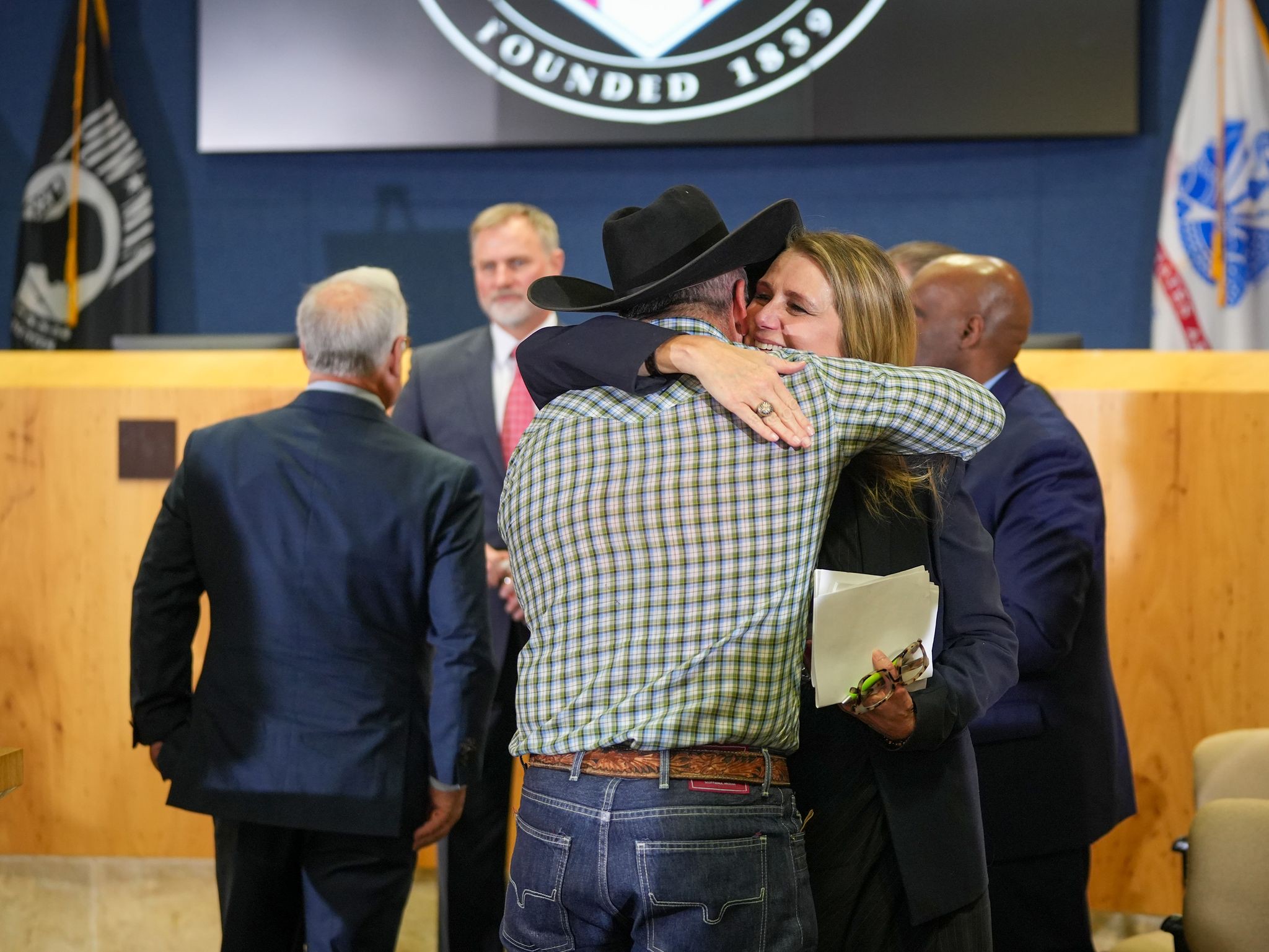news
1991 yogurt shop murders destroyed lives, permanently changed Austin
Austin lost its innocence 34 years ago when a serial killer took the lives of four young girls at a North Austin yogurt shop.
Published October 5, 2025 at 11:00am by Courtney Sebesta

Shawn Ayers, the brother of Amy Ayers, hugs Mindy Montford, of Attorney General’s Office, a news conference at Austin City Hall about the 1991 I Can’t Believe It’s Yogurt murder investigation on Monday, Sept. 29, 2025.
Jay Janner/Austin American-Statesman
"Today, finally we have an answer."
When Mayor Kirk Watson spoke those words last week in the chambers of Austin City Hall, it felt as though the entire city let out a collective sigh of relief.
For 34 years, the mystery of who killed four teen girls at a North Austin "I Can’t Believe It’s Yogurt" shop has tormented our community. The grisly details of the crime — the girls were bound with their own clothing, shot in the head and the building was torched, presumably to destroy evidence — transformed how Austin saw itself. We were no longer a quirky college town immune from such violence. It has been said the Dec. 6, 1991, murders marked the day Austin lost its innocence.
The Austin American-Statesman has chronicled the case each step as the story unfolded over three decades. We reported extensively on the initial reports of the deaths of 13-year-old Amy Ayers; sisters Sarah and Jennifer Harbison, ages 15 and 17; and 17-year-old Eliza Thomas — to the arrests of four local young men, one of whom was sentenced to life in prison and another to death, before their convictions were overturned.
And our journalists were there, in the front row, Monday when authorities announced they finally identified the killer: Robert Eugene Brashers, a serial killer linked to three other slayings in South Carolina and Missouri, and tied to the Austin crime through ballistics and DNA.
The news has been deeply emotional for our community. Many longtime Austinites I’ve spoken with in recent days shared stories of remembrance of when the murders happened and the subsequent investigation — many were just children at the time. Some said the memories were too haunting to revisit.
Many local reporters and editors have contributed to coverage of this story for 34 years. Investigative reporter Tony Plohetski, who began his career at the Statesman more than 25 years ago, started covering the case in 2003 when Maurice Pierce, one of the men originally accused, was released from the Travis County Jail after three years because prosecutors couldn’t make their case. Through the years, he has chronicled other key developments, and in doing so, has built relationships with the victims’ families and investigators.
The Statesman and Plohetski were well-positioned to break the news Sept. 26 about the case's surprising outcome. We delayed publishing our exclusive report until we knew that law enforcement had completed its briefing of the family members.We recognize that delivering news while respecting family privacy is a difficult balance — one we have grappled with before and undoubtedly will again.
As for the four men whose lives were forever changed by wrongful accusations and convictions, we will continue to cover their potential exonerations. Travis County District Attorney José Garza said at the news conference that the "overwhelming weight of the evidence points to the guilt of Robert Eugene Brashers and to the innocence of Maurice Pierce, Michael Scott, Robert Springsteen and Forrest Welborn."
"If the conclusions of the APD investigation are confirmed, I will say I am sorry, although I know that will never be enough," Garza said.
Our journalists have continued to remain fiercely loyal to our local community throughout this story of horror, tragedy, injustice and, now, relief. Our promise is to remain a trusted voice when the final chapter is written in the days and weeks to come and Austin begins the slow process, at long last, of healing from the yogurt shop murders.

